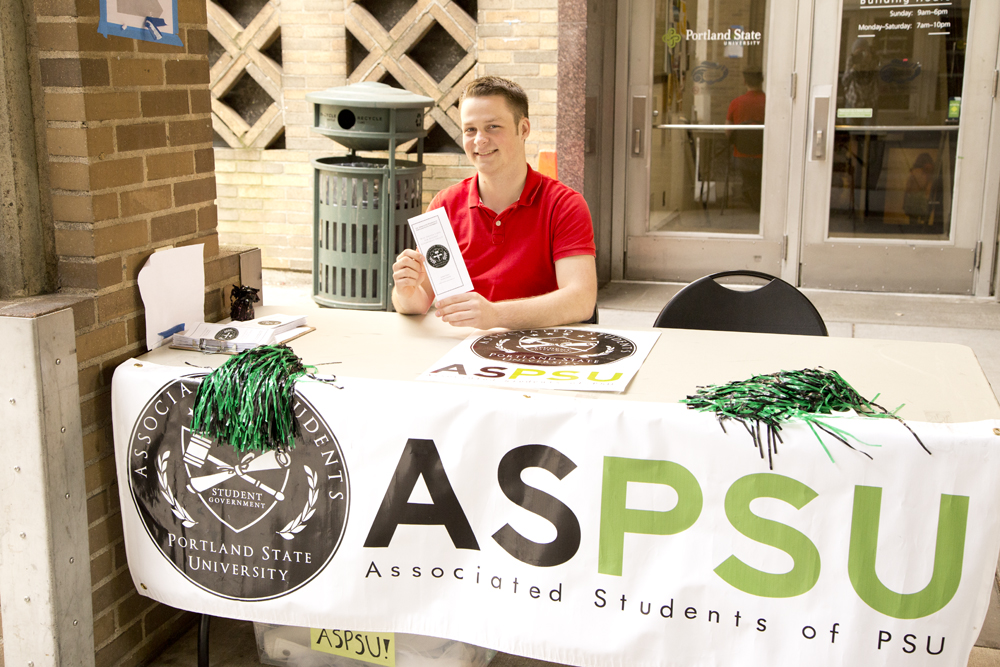In a talk entitled “Understanding Muslim Admirers of Japan’s Shinto Emperor: Entangled Histories of the Middle East and East Asia in the Age of Modern Empires” on the evening of April 8, Professor Cemil Aydin, associate professor of history at the University of North Carolina at Chapel Hill, lectured in regard to the interweaving historical and cultural roots of Japan and the Middle East that defied the contemporary adherence to the Western system of modernization throughout the late 18th and early 19th centuries. The event was jointly sponsored by Portland State’s Center for Japanese Studies and the Middle East Studies Center.
During the lecture, Aydin focused on the time between 1895 and 1945, when many Middle Eastern Muslim and Indian intellectuals were interested in Japan, and Japan was interested in the Middle East and Muslim world.
“There were cultural networks across these empires, and in terms of cultural networks and languages, we could think that East Asia and the Muslim Middle East had links to Central Asia…But they had separate intellectual traditions, such as Confucianism and Islam,” Aydin said.
“For many, many centuries until the 1850s, Muslims were aware of Japan and Japan was aware of Muslims…but there weren’t such strong ties between the two communities.”
Despite the rift between each region’s traditions and beliefs, Aydin claims that beginning in the 19th century, both regions entered into a formative period of growth and modernization that intersected on numerous levels.
“When we come to the 19th century we see something changing, both in East Asia and in the Middle East,” Aydin said.
“The empires and societies began to redesign and restructure themselves based on a Eurocentric model.”
In order to better understand the legitimacy and holistic scope of these two regions during this pivotal time in history, Aydin believes it’s essential to examine the unique ideological, societal and cultural growth and development that occurred outside of the Western sphere of influence.
“I don’t want us to think of the history of the Middle East or Asia in terms of the simple model of Western attack and Eastern response,” Aydin said. “I think that model is highly inaccurate [and] is very reductionist.”
Ken Ruoff, director of the Center for Japanese Studies, cites Japan’s victory over Russia in the Russo-Japanese War as one of the essential factors in East Asia claiming its own unique identity upon the global stage during this period.
“At a moment in history when Euro-Americans were insisting that modernity resulted from race, culture and religion (Christianity), Japan’s stunning victory in 1905 over Mother Russia shook the very foundations of the international system of racism, and demonstrated irrefutably that modernity had nothing to do with race, culture or religion, and rather that modernity belonged to the world,” Ruoff said.
“This was one of the first truly global moments, for non-whites, non-Christians (including Muslims), and colonized peoples throughout the world were watching carefully, and they all came to the same conclusion: Japan had proven that a non-white, non-Christian country could modernize without selling its soul.”
Professor James Grehan, director of the Middle East Studies Center, praised Aydin’s commitment to drawing attention toward the often-overlooked development of modernity and schools of thought outside of the West.
“It’s really a lecture about world history,” Grehan said. “If you go back and you look at what people have been writing about the relationship of the West to the rest of the world, what you usually see is a focus on intellectual and political activists from the non-Western parts of the world looking at the West.
“I think what [Aydin has] been able to show us is that, yes, they were certainly looking at the West and engaged with the West…but non-Western intellectuals were also talking to each other,” Grehan said.
Like Aydin, Grehan firmly believes in the importance of understanding the sort of cross-cultural networks shared between the Middle East and Japan, and subsequently, the deeper examination of how regional identity fosters global awareness and communication.
“You can’t take one part of the world and argue that it’s ever been in isolation, or that it is entirely inward-oriented,” Grehan said. “You have to see all the connections heading from one region to others…the sort of scholarship Professor Aydin is doing reminds us of all the different ways the world is connected.”
Ruoff also noted that anyone with an interest in further exploring Asian history would benefit from attending the upcoming lecture by Professor John Breen, “Tales of Ise: the shrines, their priests and patrons in post war Japan” on Thursday, April 24 in room 296/8 of PSU’s Smith Memorial Student Union.






